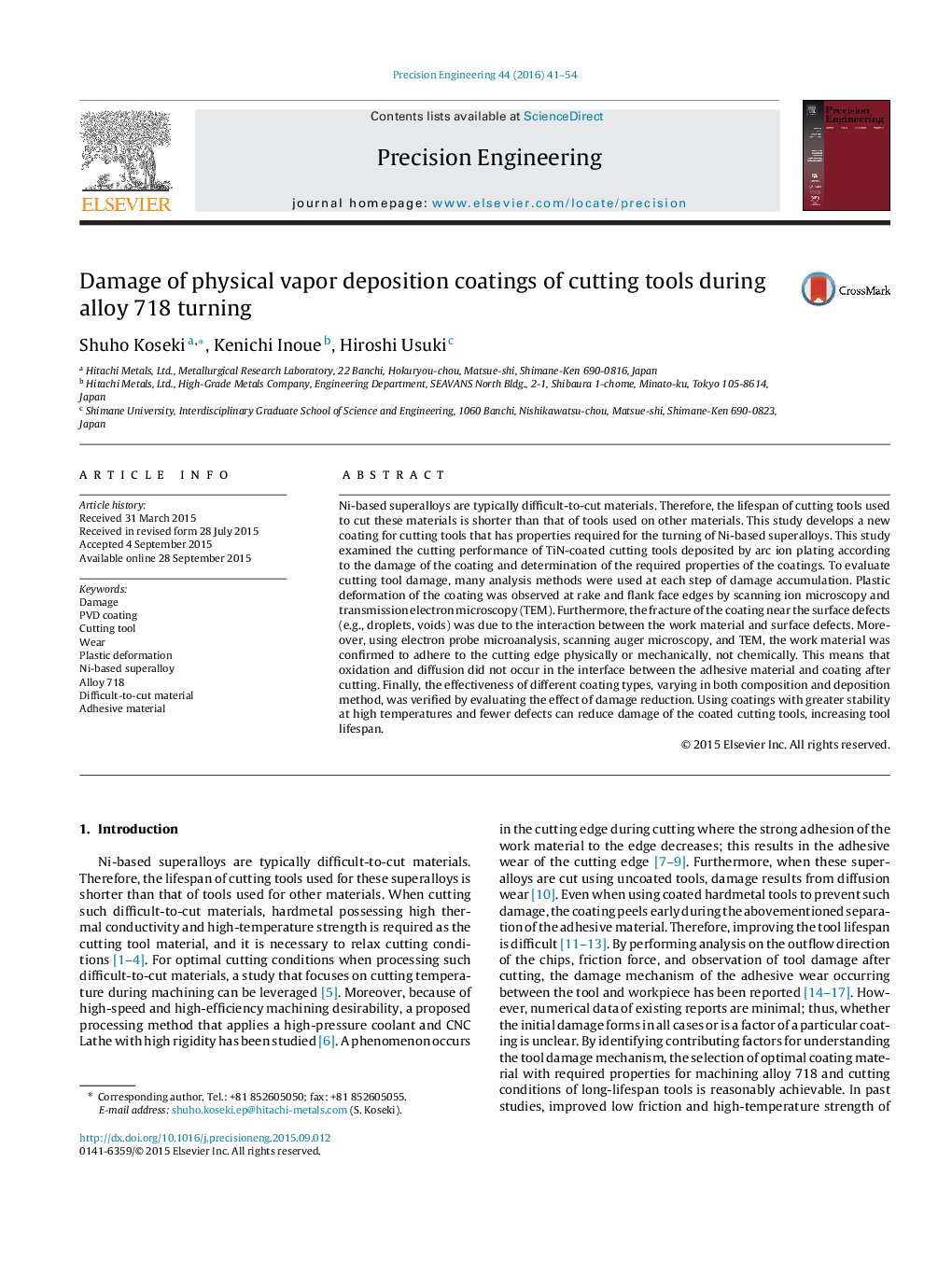| Article ID | Journal | Published Year | Pages | File Type |
|---|---|---|---|---|
| 803833 | Precision Engineering | 2016 | 14 Pages |
•Tool damage of TiN coated cutting tools deposited by arc ion plating were investigated after turning of alloy 718.•Plastic deformation of the coating was observed at rake and flank face edges.•Fracture of the coating was caused from coating defects like droplet.•Oxidation and diffusion did not occur in the interface between the adhesive material and the TiN coating.•High temperature stability and lower defects of the coatings can reduce damage of the coated cutting tools.
Ni-based superalloys are typically difficult-to-cut materials. Therefore, the lifespan of cutting tools used to cut these materials is shorter than that of tools used on other materials. This study develops a new coating for cutting tools that has properties required for the turning of Ni-based superalloys. This study examined the cutting performance of TiN-coated cutting tools deposited by arc ion plating according to the damage of the coating and determination of the required properties of the coatings. To evaluate cutting tool damage, many analysis methods were used at each step of damage accumulation. Plastic deformation of the coating was observed at rake and flank face edges by scanning ion microscopy and transmission electron microscopy (TEM). Furthermore, the fracture of the coating near the surface defects (e.g., droplets, voids) was due to the interaction between the work material and surface defects. Moreover, using electron probe microanalysis, scanning auger microscopy, and TEM, the work material was confirmed to adhere to the cutting edge physically or mechanically, not chemically. This means that oxidation and diffusion did not occur in the interface between the adhesive material and coating after cutting. Finally, the effectiveness of different coating types, varying in both composition and deposition method, was verified by evaluating the effect of damage reduction. Using coatings with greater stability at high temperatures and fewer defects can reduce damage of the coated cutting tools, increasing tool lifespan.
